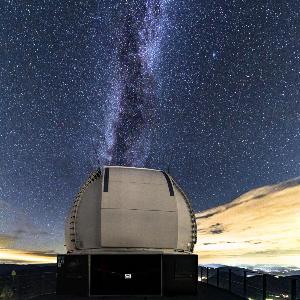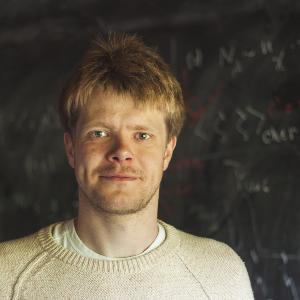Public Outreach
Information for non-experts and the interested public

Information for non-experts and the interested public

The Universitätssternwarte München (USM) has a history of over 200 years in innovative astronomical and astrophysical research. Today it is home to 5 research chairs and more than 10 individual research groups. With such a large team, our scientific efforts cover a wide range of subjects relevant to astrophysics and cosmology, such as extragalactic astronomy, large-scale structure cosmology, numerical astrophysics, extrasolar planets, stellar physics and statistical data analysis incl. artificial intelligence. In the following you find a brief description of our main lines of research, as well as information about public events and online public outreach material. We are also happy to help you directly with any further inqueries!
Senior Staff Astronomer
Extragalactic Astronomy, Wendelstein Observatory

Fraunhofer-Schwarzschild Fellow
cosmic large-scale structure, quantum cosmology, artificial intelligence
Modern cosmology has been shaped by three unexpected observations:
At the beginning of its life, a star is surrounded by a rotating disk of gas and dust - the protoplanetary disk. Properties of the disk such as its temperature and density profiles and its material composition are intricately linked to the properties of its central star and to the composition of the molecular cloud from which both star and disk formed. And these relationships between seed material, star and disk determine what kind of processes of planet formation can be fueled in the protoplanetary disk.
Today, we are aware of thousands of extra-solar planets, i.e. of planets that revolve around stars other than our sun. This has brought us closer to understanding the mechanisms of planet formation and the variety of planets that these mechanisms can produce. This also brings us closer to answering a central question of modern astrophysics: how typical are the conditions in our solar system and in particular how typical is planet earth? Scientists at the USM work at the forefront of efforts to answer this and other questions. These efforts include
At first glance, galaxies are simply accumulations of Billions of stars in one place on the nightsky. With deep imaging surveys we have by now spotted hundreds of Millions of these objects (with many Billions more estimated to exist in the observable Universe), and this cosmic galaxy population displays a huge variety, indicating that there are in fact many different types of galaxies. Observational properties that can vastly differ between galaxies are e.g. the following.
Modern astronomy needs modern instruments! These are manufactured, among others, at the LMU Observatory (USM).The cryogenic optical setup of the MICADO camera for the upcoming ELT (ESO), large parts of the NISP instrument for the Euclid satellite and several projects at the VLT (ESO) are just a few examples of this.
In addition to software and technology for international projects, the USM workshop also builds proprietary observation instruments such as the Wendelstein Wide Field Imager (WWFI) and the 3-channel camera (3KK), which are located and active at LMU's state-of-the-art Wendelstein Observatory.
10:45 | 5 Nov 2023
The Wendelstein summit with its observatory has always been an attraction for a large number of visitors from regions far beyond Bavaria.
Our tours take place on 2 Thursdays per month from June to September, at 2:00 p.m. and 3:00 p.m., only after prior registration in the web form (linked below) at least two weeks before the desired date.
If the agreed date cannot be kept, we ask that you cancel in good time by telephone (at the LMU Observatory in Munich) or by email. Please do not call the observatory directly! Our on-site astronomers sleep during the day!
Duration of the Tour:
~50 min
Number of people:
max 20 people per Tour
The meeting point is directly at the summit (approx. 20 minutes hike from the mountain station) at the long metal stairs on the large visitor platform.
The tours only take place when the weather is good and the “Gipfelweg” is accessible! Under no circumstances during a thunderstorm!
Keep an eye on https://www.wendelsteinbahn.de/wetter
Price:
The tours are free, but donations to the non-profit association “Freundeskreis Wendelstein Observatorium” are very welcome (IBAN DE 7170 0202 7006 5950 5355, BIC HYVEDEMMXXX, UniCredit).